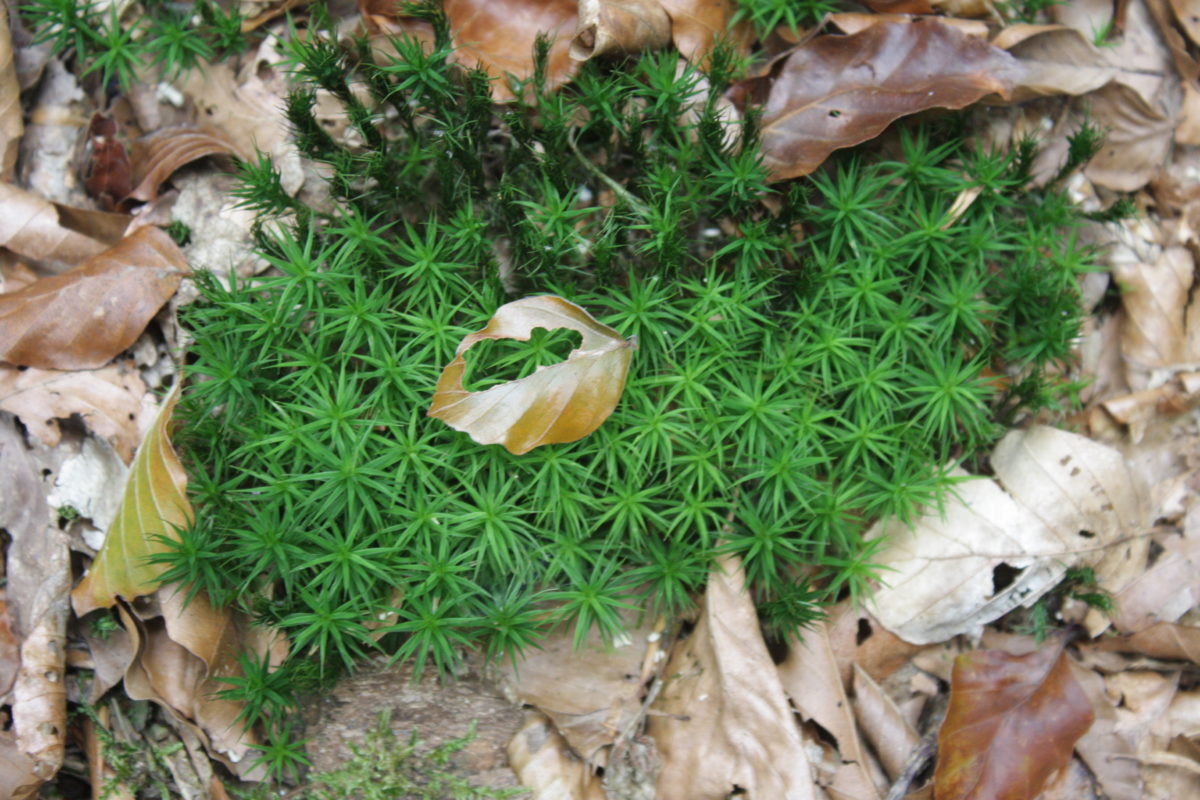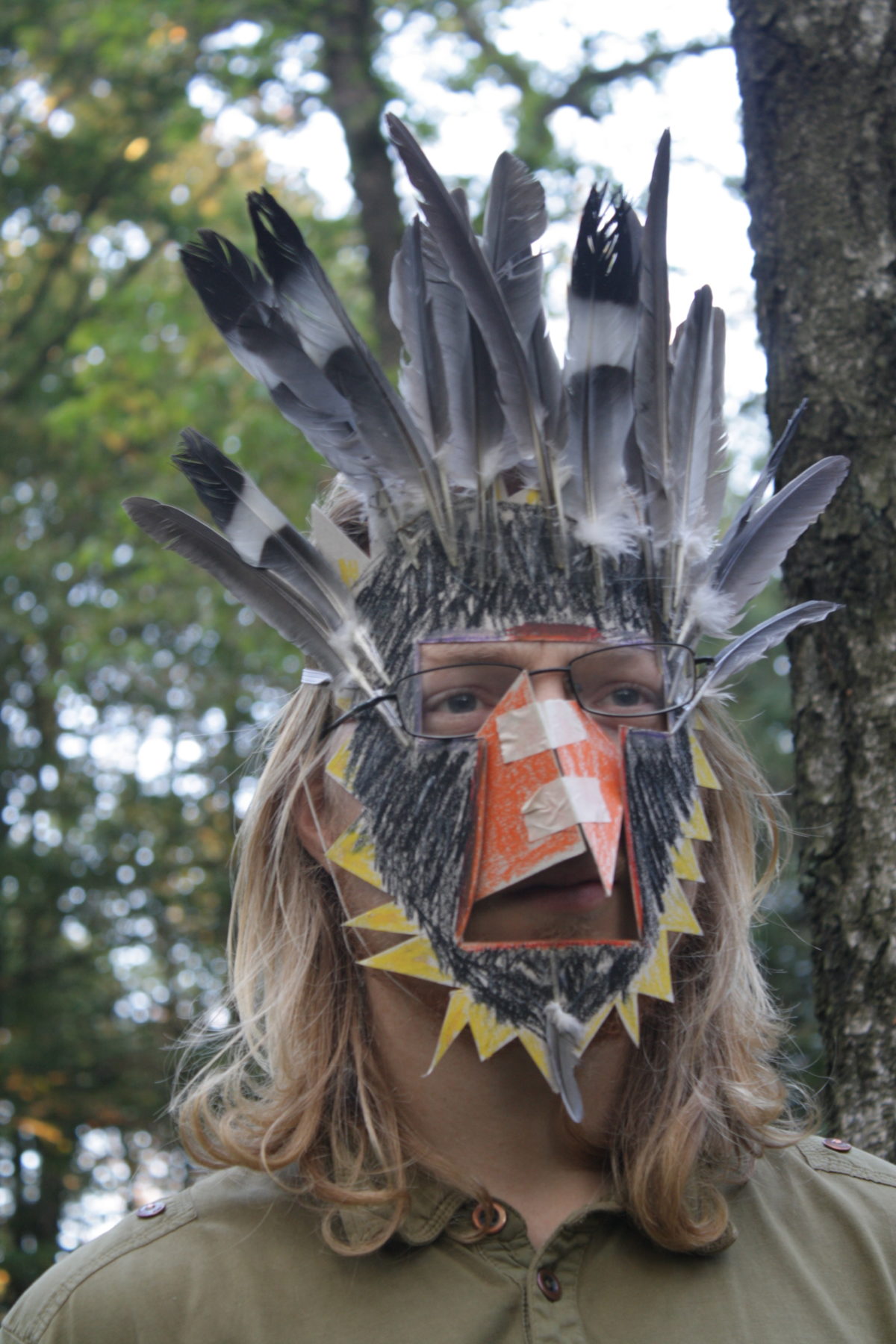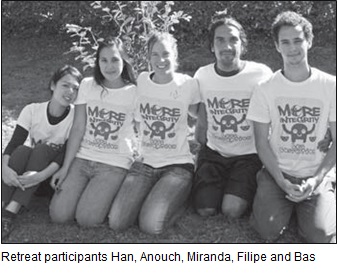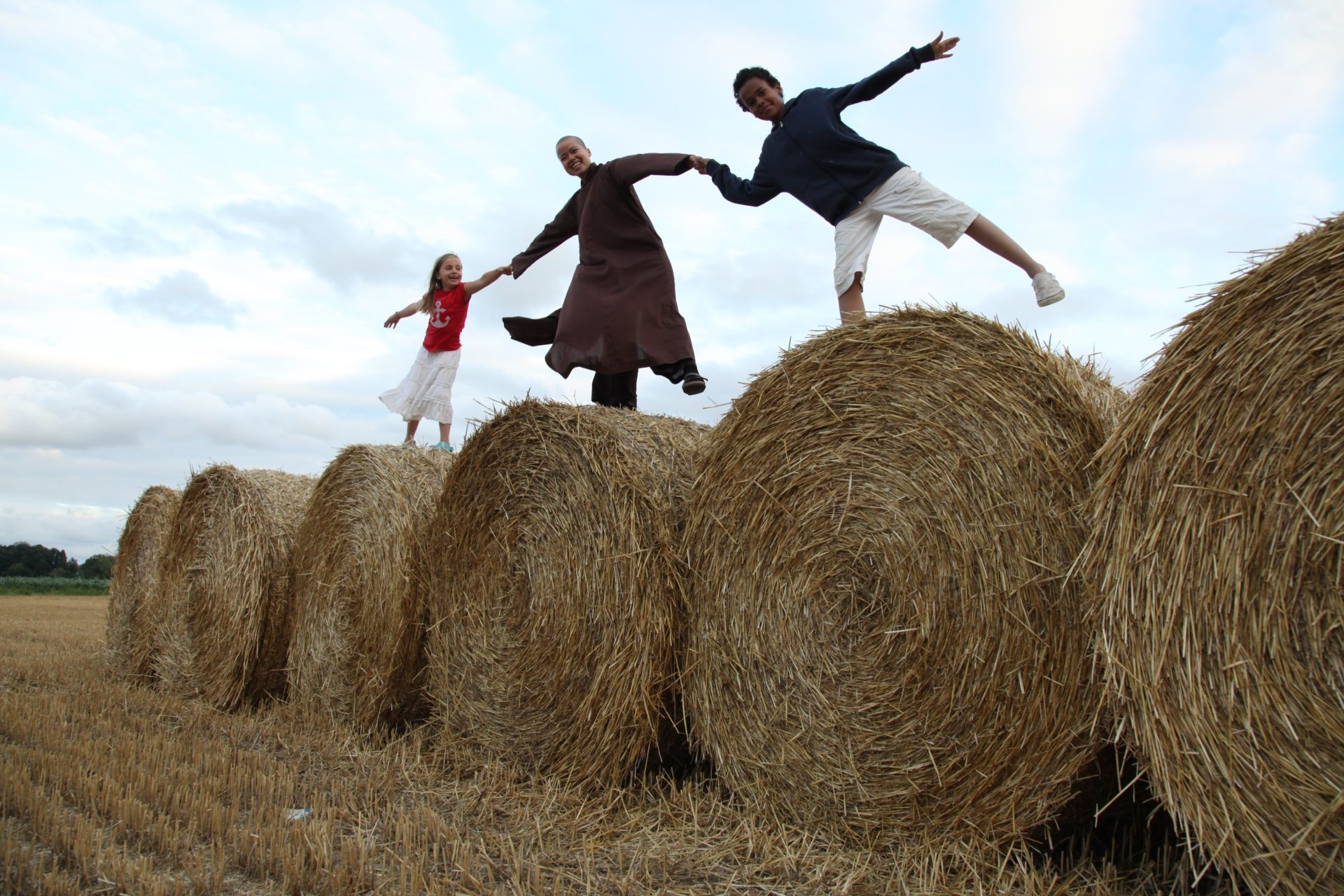The World We Are
By Felipe Viveros, Miranda van Schadewijk, and Bas Bruggeman

Look at the flower. Could it possibly exist without the rain, the sun, the soil, the gardener, the minerals or even without your consciousness? It could not exist if only one of the above is not there. If one is missing, the whole flower is missing,
The World We Are
By Felipe Viveros, Miranda van Schadewijk, and Bas Bruggeman

Look at the flower. Could it possibly exist without the rain, the sun, the soil, the gardener, the minerals or even without your consciousness? It could not exist if only one of the above is not there. If one is missing, the whole flower is missing, too.
- Thich Nhat Hanh, The Art of Power
It is a beautiful autumn day in Waldbröl. The tranquility of the German countryside contrasts sharply with the constant speed and movement in our city lives. The European Institute of Applied Buddhism (EIAB), with its emphasis on promoting social work initiatives, is the perfect setting for the first Deep Ecology and Permaculture retreat in our tradition.
As participants, we’ve come from many different countries, and from as far away as North America. For one week, we’re here to experience the unusual mix of applied Buddhism and ecology in action. Although we’re a group of diverse young people, there’s a shared longing to connect with Mother Earth. Yet we know that we must first connect with ourselves. After all, the world is nothing less than an extension of ourselves: the world we are. Coming together like this is an expression of our deep concern for Mother Earth, and an opportunity to share our deep wish to improve life on spiritual, social, and environmental levels.

Permaculture: Cultivating External Soil
Though the problems of the world are increasingly complex, the solutions remain embarrassingly simple.
- Bill Mollison, Permaculture: A Designer’s Manual
We sat in sunlit woods while our wise Native American teacher, Ishi, taught us how every element in nature has a purpose, if not several, for its existence. From the weeds to the insects, from big trees to small bushes—they all exist for a reason. Everybody and everything can contribute in a positive way. This led us away from the discriminative views of traditional agriculture. Ishi transmitted his passion about caring for Mother Earth and understanding her cycles and rhythms. We understood that moving in flow with these rhythms makes things easier, more natural.
Under Ishi’s guidance, we built an herb spiral and arranged the vegetable garden of the EIAB. He made us aware of real possibilities of feeding the whole world, and our role in making this happen: growing our own food, living more simply and consciously, and reducing our impact upon the Earth. For Ishi, mindfulness is a natural part of this process. While gardening, he takes one step at a time and follows the rhythms of nature. Slowly and harmoniously, he transforms compost into roses and bare gardens into diverse and fruitful jungles.
After absorbing Ishi’s teachings and putting our hands and our hearts in direct contact with the soil, we were now prepared for further opening and deep transformation. We had no idea what an intense spiritual and emotional experience we were about to undergo.
Deep Ecology: Cultivating Inner Soil
The most remarkable feature of this historical moment on Earth is not that we are on the way to destroying the world—we’ve actually been on the way for quite a while. It is that we are beginning to wake up, as from a millennia-long sleep, to a whole new relationship to our world, to ourselves and each other.
- Joanna Macy, Thinking Like a Mountain: Towards a Council of All Beings
The time had come to look inside and to study our inner nature. We went indoors, sat in a circle, and listened to the bell. Two special teachers, Claudia and Friedemann, guided us through an intense workshop on Deep Ecology. We were encouraged to connect with our innermost selves and to share our relationship with the Earth and how we felt in that moment. Because this wasn’t something we were used to doing, it was a bit of a struggle. But it was our first glimpse of what Deep Ecology is really about: honoring our feelings.
We discovered how rarely we have the opportunity to share how we feel about our relationship with the Earth. Often we tend to ignore our feelings and just carry on, but sharing helped us understand each other’s pains and struggles. When struck by appalling news of an oil spill or the sight of starving children in Africa, we experience a wave of sadness—we suffer. By acknowledging this reaction, we see that our pain comes from our deep connection to everything else: we inter-are. This genuine care and love for other species and for all of nature is something very instinctual.
We dived into the heart of problems facing our world: the destruction of the Amazon, extinction of species, genetically modified crops, animal exploitation, endless war, extermination of indigenous peoples, famine, erosion, etc. This felt very dark and scary, even overwhelming. We walked very slowly around a small globe representing the planet, realizing how much harm we are doing to our Mother Earth, how much pain and suffering we are inflicting upon other innocent beings, and how we are at the brink of self-destruction.
After a much-needed break, Claudia used a powerful technique to help us express our store consciousness. She assembled a pile of leaves to represent our sorrows, a stone to represent our fear, a wooden stick to represent our anger, an empty glass bowl to represent our uncertainty, and a cloth to represent our neutral feelings. These were the perfect vehicles to release our emotions. As she introduced the leaves, she immediately began to cry as she connected with her sadness: sadness for not being able to change things as much as hoped for, despair from helplessness in the face of big corporate interests and for the world we are leaving to our children.
As she moved to the stone, we realized how fear is connected with pain. She shared how terrifying it is not to know what is going to happen in our future or what kind of world we will leave to our kids, when evil seems to reign and destruction and division increase. We use anger like a stick to protect ourselves, to survive, to fight for the right to live. Our uncertainty and disorientation in the face of corporations and governments was perfectly represented by the emptiness of the glass bowl. Funnily enough, the cloth representing neutral feelings was hardly used!
We touched the objects and shared our feelings, realizing they’d been stored up for a long time. We wailed as we released our feelings of impotence, sadness, and loneliness. After our crying, we felt a huge relief in our hearts from knowing that we were not alone, that there were others who knew how we felt and who shared and honored these feelings.
Reaping the Harvest
The “council of all beings” on the following day was not only beautiful, but it was the perfect medicine following the tears. We walked into the forest at our own pace and chose a sunny spot. We’d each come to find a spirit, to hear the beings living there, the birds, the wind. A drum called us back to the circle, where we made masks of the entities that we found—or that found us—in the forest.
The week had been very full of inspiration, difficulties and solutions, tears, joy, and sunshine. We needed time to digest everything. On the last day, we talked about how to move forward and make a difference. How can we combine our dreams to shape a better future for ourselves and all upcoming generations? How can we honor the earth and ourselves? Many answers were given; many dreams were shared.
To end, there was a tree planting ceremony. We planted two trees to bear fruits for the EIAB community to enjoy. Ishi guided the ceremony by telling the story of a Native American peacemaker who brought peace to warring tribes. As a symbol of that peace, they buried their weapons and planted a tree on top of them. In our ceremony, we buried all of the worries and pains of that week, our compost. We hope the trees will grow strong and happy from all the mud and joy we fed them.
We each take home a bigger heart, grateful for new friends who share a big dream. In the future, we hope to organize more retreats that combine our mindfulness practice with education about growing our own food, learning about natural medicine, and building ecologically. Through our love for nature, we hope to find answers on how we can live in a more ecologically sustainable and self-reliant way. For more information about our efforts and retreats, keep your eye on www.theworldweare.org.

Felipe Viveros, True Flowering of the Practice, was born in Chile and lives in the UK. He is an artist and peace activist. He practices with both Touching the Earth Sangha in Glastonbury and Wake Up. He is an Order of Interbeing member.
Miranda van Schadewijk, Inspiring Presence of the Heart, lives in Amsterdam, where she studies cultural anthropology. She helps with Wake Up and has joined tours in the UK and Vietnam. Wake Up has shown her that being in touch with nature is most precious, enriching, and healing in our lives.
Bas Bruggeman made it to a Plum Village youth retreat for the first time in 2008, and has since been enchanted. This immeasurable love has resulted in spending several months in Plum Village and organizing Wake Up retreats. He is working on his Master’s thesis in cultural anthropology on the Plum Village practice.

